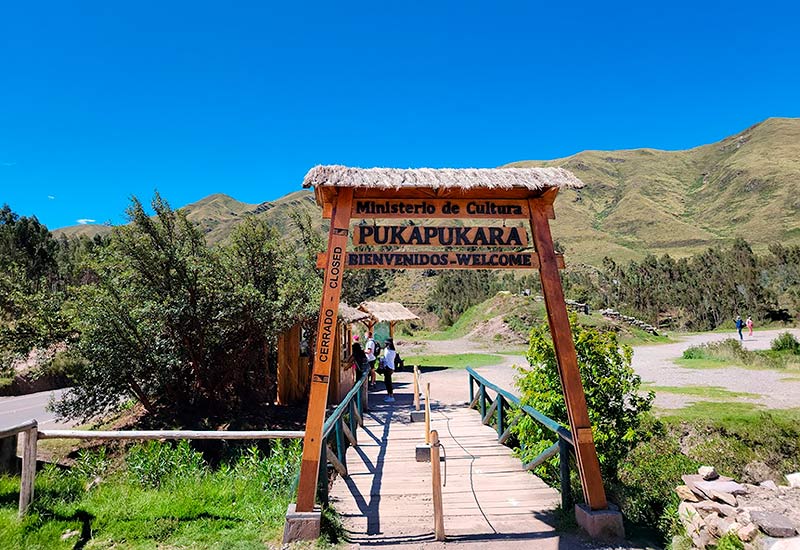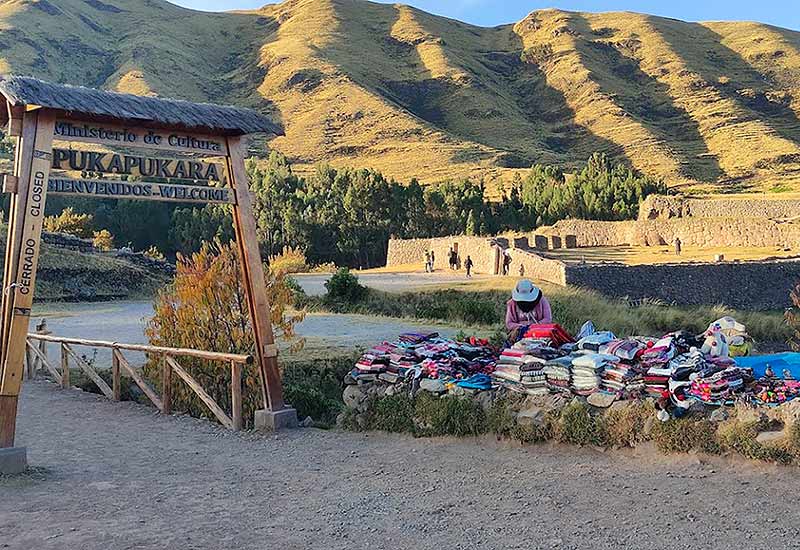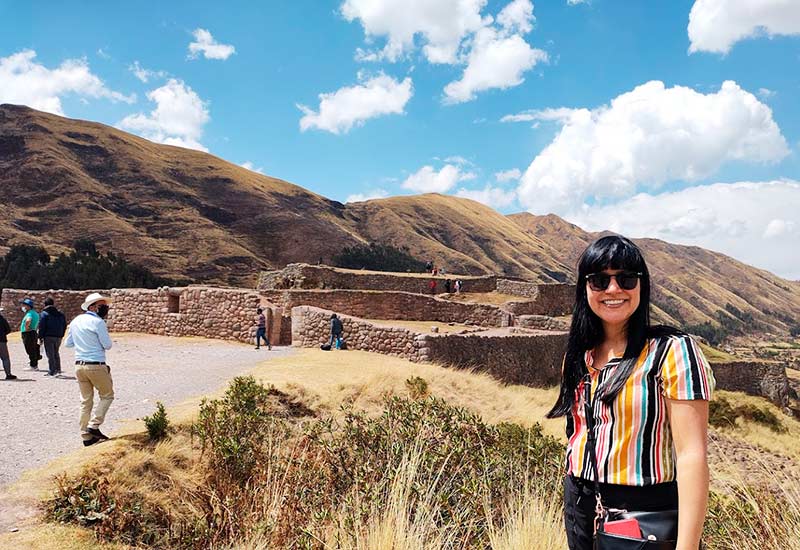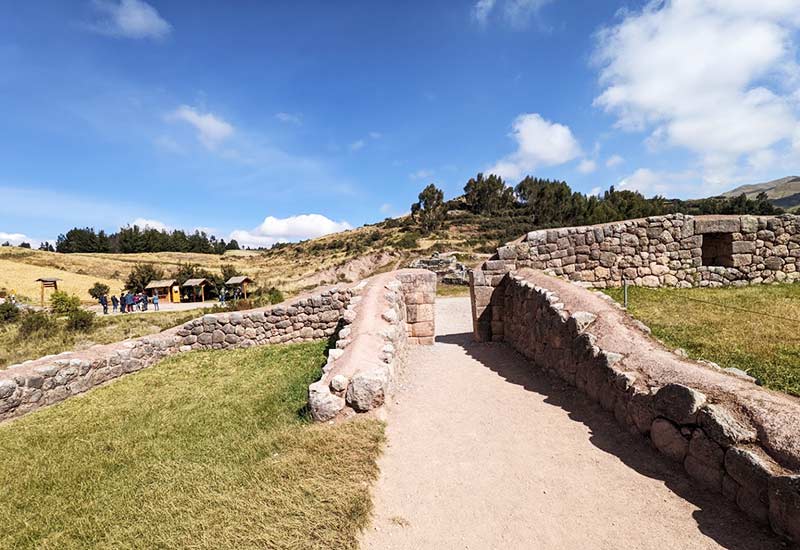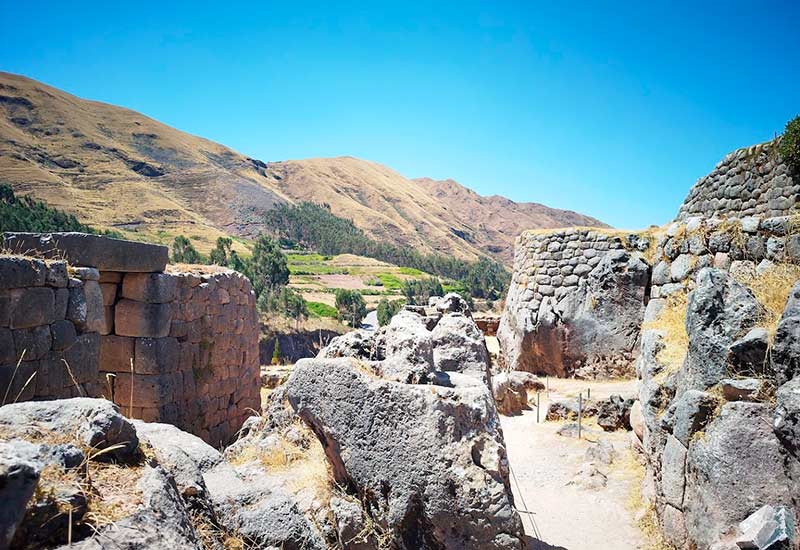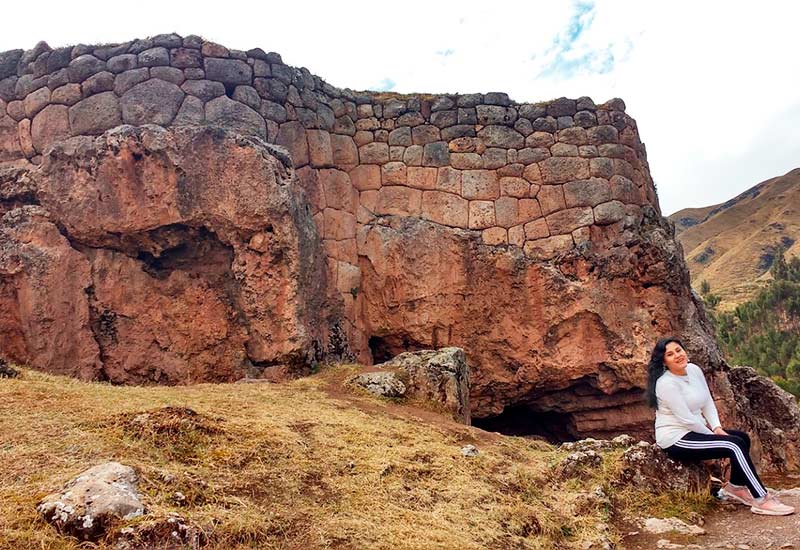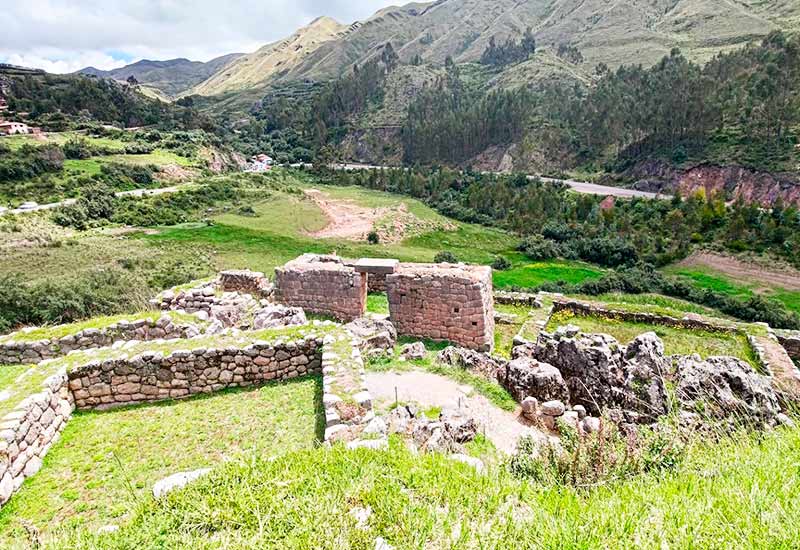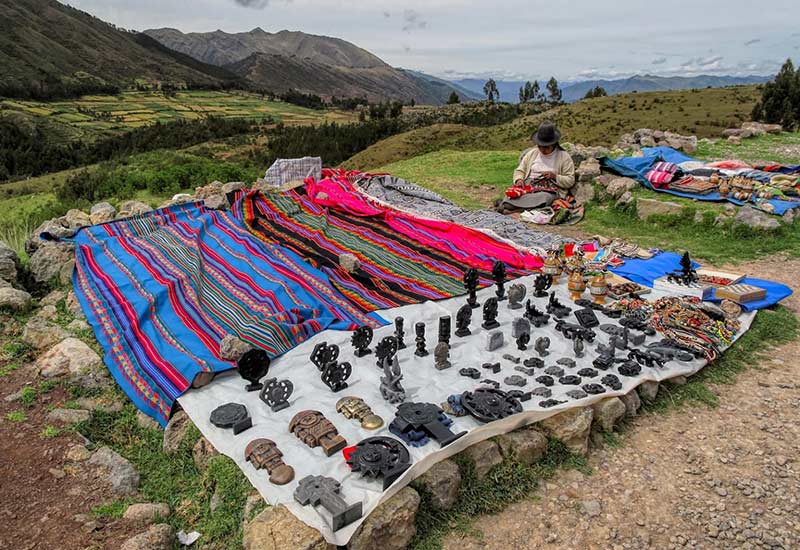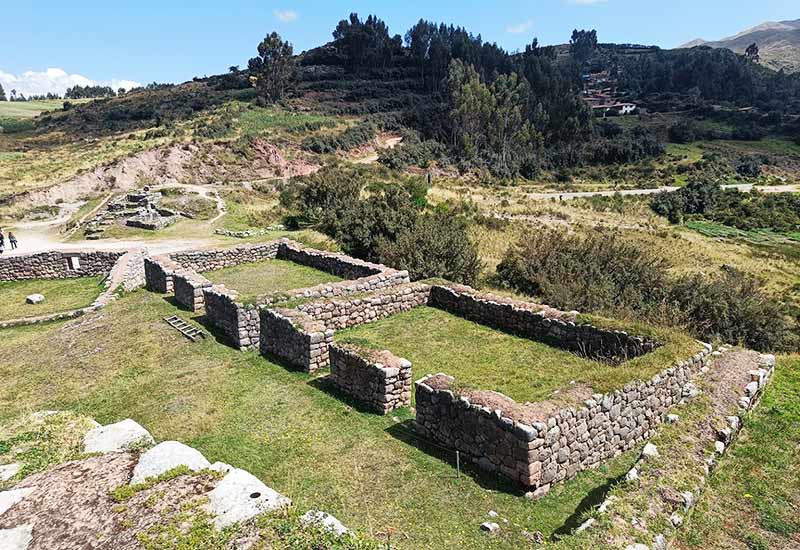Interesting facts about the fortress of Puca Pucara
Puca Pucara o Pukapukara es uno de los principales recintos arqueológicos cercanos a la ciudad del Cusco junto con Sacsayhuaman, Qenqo y Tambomachay. Se encuentra a 7 kilómetros del Cuzco, a unos 3,850 metros sobre el nivel del mar. Debido a encontrarse en una plataforma elevada se le dio la denominación de fortaleza. Sin embargo, su función aún es incierta. Actualmente es un lugar obligado de visita durante la estadía en la Ciudad Imperial y antes de conocer Machu Picchu. Cuenta con terrazas, habitaciones, escalinatas y andenería. Conoce un poco más de los misterios que encierra este popular sitio.
- What’s the meaning of your name?
- Military place?
- Waiting place?
- ¿Qhapac ñan?
- Tambo or resting place
- Difference with Sacsayhuaman
- The chincana
- Cusco Tourist Ticket
- Frequently Asked Questions about Puca Pucara
- Photo gallery
Puca Pucara is one of the most famous Inca archaeological sites in the city of Cusco. It is part of the so-called ‘4 ruins’, along with Qenqo, Tambomachay and the Sacsayhuaman fortress. It is located on the outskirts of the city of Cusco, about 7 kilometers from the main square. Investigations suggest that it was a place of military establishment. The entrance is included in the Cusco Tourist Ticket. It is also included in the famous ‘City Tour Cusco’.
What’s the meaning of your name?
- Since the 20th century, this archaeological site has received the name of Puca Pucara or Pukapukara, which in Quechua means ‘red fortress’.
- This is due to the color of the earth with abundant ichu (Andean straw) and characteristic vegetation of high-altitude areas such as this site.
- In the afternoons, the limestone rocks of a large part of its buildings acquire a reddish hue due to the twilight rays.
- Due to these characteristics it was given its current name. However, it is not yet proven whether or not it served as a fortress for the Incas.
Military place?
- Despite its name ‘red fortress’ there is no evidence that Puca Pucara was built as a place or fortress for Inca military defense.
- The denomination is mainly due to its fortified appearance on top of an irregular mountainous formation.
- Sacsayhuaman, the largest archaeological site in the area, it did serve as a fortress during the Inca resistance after the conquest by the Spanish.
- It is probable that, if necessary, Pukapukara would have been the scene of such defensive actions.
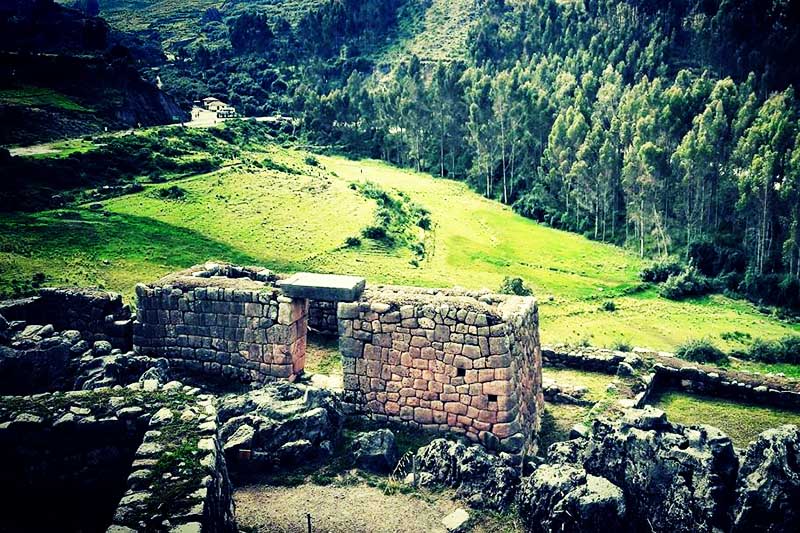
Puca Pucara Fortress
Waiting place?
- Although there is no evidence of armed confrontations in Puca Pucara, it is believed that there were specific places in the compound for the settlement of soldiers.
- It would be the personal guards of the Inca who was visiting the neighboring archaeological site: Tambomachay.
- This complex served as the baths and resting place of the Inca. In addition, there, the ruler of Tahuantinsuyo performed solemn acts of worship to water, the source of life according to the Inca worldview.
- While the Inca remained in Tambomachay, his soldiers and servants remained in Pukapukara.
Qhapac Ñan
- The The Qhapac Ñan It was a network of roads that the Incas created with the aim of uniting the main urban centers of the Tahuantinsuyo or Inca Empire.
- Cusco was the center of these trails that started from there in various directions. One of these hundred-year-old paths crossed Puca Pucara.
- After more than 600 years, this stone path is partially destroyed but it is still easily distinguishable.
- The qhapac ñan linked the main Inca urban and religious centers by up to 30 thousand kilometers of road.
- They expanded to Ecuador and part of Colombia to the north, part of Chile and Argentina to the south, and almost the entire Peruvian territory.
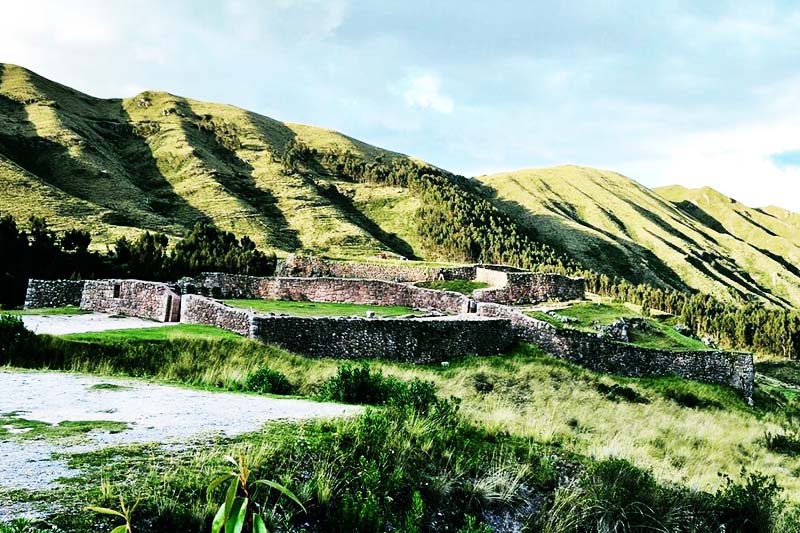
View of the archaeological fortress of Pukapukara
Tambo or resting place
The tambos were constructions that served as rest areas and that contained various supply products such as various foods, wool, firewood, and more. The Incas used it to assist the chasquis or messengers who traveled several kilometers and rested in these places. Due to the fact that the network of Inca roads crossed the site of Puca Pucara, the place also served as a tambo or shelter. The soldiers and servants of the Inca who accompanied him to Tambomachay probably also provided themselves with food and other products in Pukapukara.
- The tambos were constructions that served as rest areas and that contained various supply products such as various foods, wool, firewood, and more.
- The Incas used it to assist the chasquis or messengers who traveled several kilometers and rested in these places.
- Due to the fact that the network of Inca roads crossed the site of Puca Pucara, the place also served as a tambo or shelter.
- The soldiers and servants of the Inca who accompanied him to Tambomachay probably also provided themselves with food and other products in Pukapukara.
Difference with Sacsayhuaman
- Together with Qenqo, Tambomachay and Sacsayhuaman; Puca Pucara was one of the most important places for the Incas.
- However, unlike the Sacsayhuaman Fortress, the ‘red fortress’ was not built with huge stones or granite blocks.
- Pukapukara was built mainly with limestone rock of medium and small dimensions. The quality of the walls is lower compared to buildings such as Coricancha, Ollantaytambo, Tipón or other sites.
- The archaeological site has 3 levels or walls. The first and lower one has a sinuous shape with irregular rooms. The second, higher, surrounds the central buildings and has fewer rooms. The third, at the top, is destroyed by the passage of time.
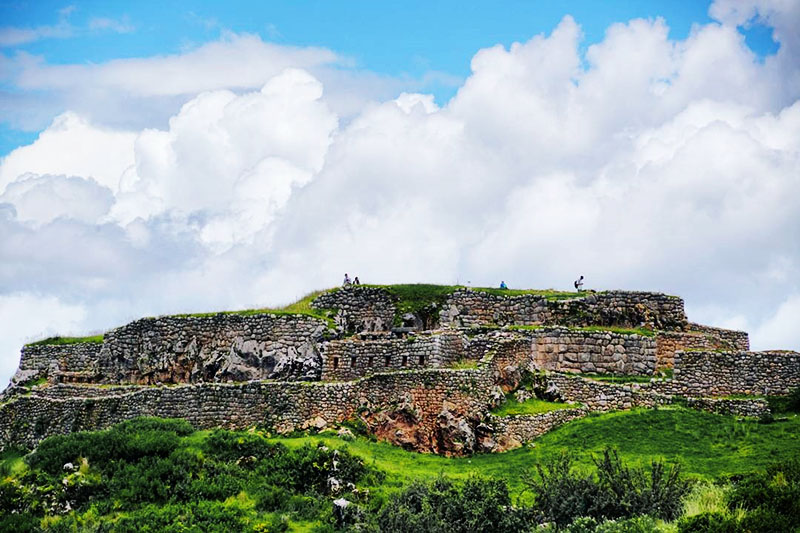
Puca Pucara enclosure
The chincana
- It is believed that in Inca times there were chincanas or labyrinths that secretly communicated different sites through underground tunnels.
- In Sacsayhuaman, there are 2 caves or chincanas, one small and one large. The first has a short distance and tourists are allowed to enter.
- However, the second and largest is closed. It is believed that this cave leads to the Coricancha (Temple of the Sun) located in the current city of Cusco.
- It is also believed that these secret paths contain treasures hidden by the Incas. In Puca Pucara there is an underground cave, which is believed to connect with Tambomachay. However, this is not proven.
Cusco Tourist Ticket
- There are many mysteries hidden in the archaeological site of Pukapukara. There are 2 ways to visit it: the first is by going directly to the entrance gate of the place. The attention is from Monday to Sunday from 07:00 a.m. to 2:00 p.m. to 06:00 p.m.
- The other is acquiring the so-called Cusco Tourist Ticket, which allows access to this and other important Inca archaeological sites, such as: Sacsayhuaman, Qenqo, Tambomachay, Piquillacta, Tipón, Pisac, Ollantaytambo and Chinchero.
- This ticket is purchased at the Municipality of Cusco (Avenida El Sol 103).
Frequently Asked Questions about Puca Pucara
What was the function of Puca Pucara?
It is presumed that Puca Pucara served as a military resting place for the Inca troops while it was located in the Tambomachay water temple, located a few steps away.
What does the name Puca Pucara mean?
Puca Pucara is a Quechua word that, translated into Spanish, means ‘Red Fortress’. It is presumed that this is due to the color of its walls when the Cusco sunset arrives.
What is the location of Puca Pucara?
Puca Pucara is located on the outskirts of the city of Cusco, about 7 kilometers from the main square. It is 3,580 meters above sea level.
How to get to Puca Pucara from the city of Cusco?
To get to Puca Pucara from the city of Cusco, you must take the Circunvalación highway, the same one that connects with Sacsayhuaman, Qenqo and Tambomachay. You can get there by taxi or by public transport (buses called ‘Señor del Huerto’ or ‘Cristo Blanco’).
How much does the entrance to Puca Pucara cost?
The entrance to Puca Pucara is included in the ‘Cusco Tourist Ticket’, which also includes access to Sacsayhuaman, Qenqo and Tambomachay. It costs 70 soles for foreigners and 40 soles for Peruvians.
How to visit Puca Pucara with a tour?
Puca Pucara is included in the ‘City Tour Cusco’, which also includes a visit to the Cathedral, Coricancha, Sacsayhuaman, Qenqo and Tambomachay. Offers: full transportation and professional guide service.
What to see in Puca Pucara?
Puca Pucara offers a rustic Inca construction divided into three levels. The tourist can go through each level and get incredible photos.
What tourist attractions are near Puca Pucara?
A few steps from Puca Pucara is the archaeological site of Tambomachay. The fortress of Sacsayhuaman and the Inca temple of Qenqo are also nearby.
How to get a tour guide to visit Puca Pucara?
If you make your visit on your own, at the gate of Puca Pucara you can request the service of a tour guide. If you make your visit with the City Tour Cusco, the professional guide service is already included.
What is the weather like in Puca Pucara?
Puca Pucara has a cold temperate climate with night temperatures of 2ºC. and 20ºC. on day. The rains can occur at any time of the day (especially in January, February and March).
Advice from people who have been there
 By: Luiz M.
By: Luiz M.“With the best view!“
“Pukapukara is a wonderful site with great views. There is not much to say since there are only the ruins but if we imagine and go back to the time of the Incas, we will see how majestic it looked and we can see that in the remaining ruins.“
By Ticket Machu Picchu – Last updated, August 15, 2024
